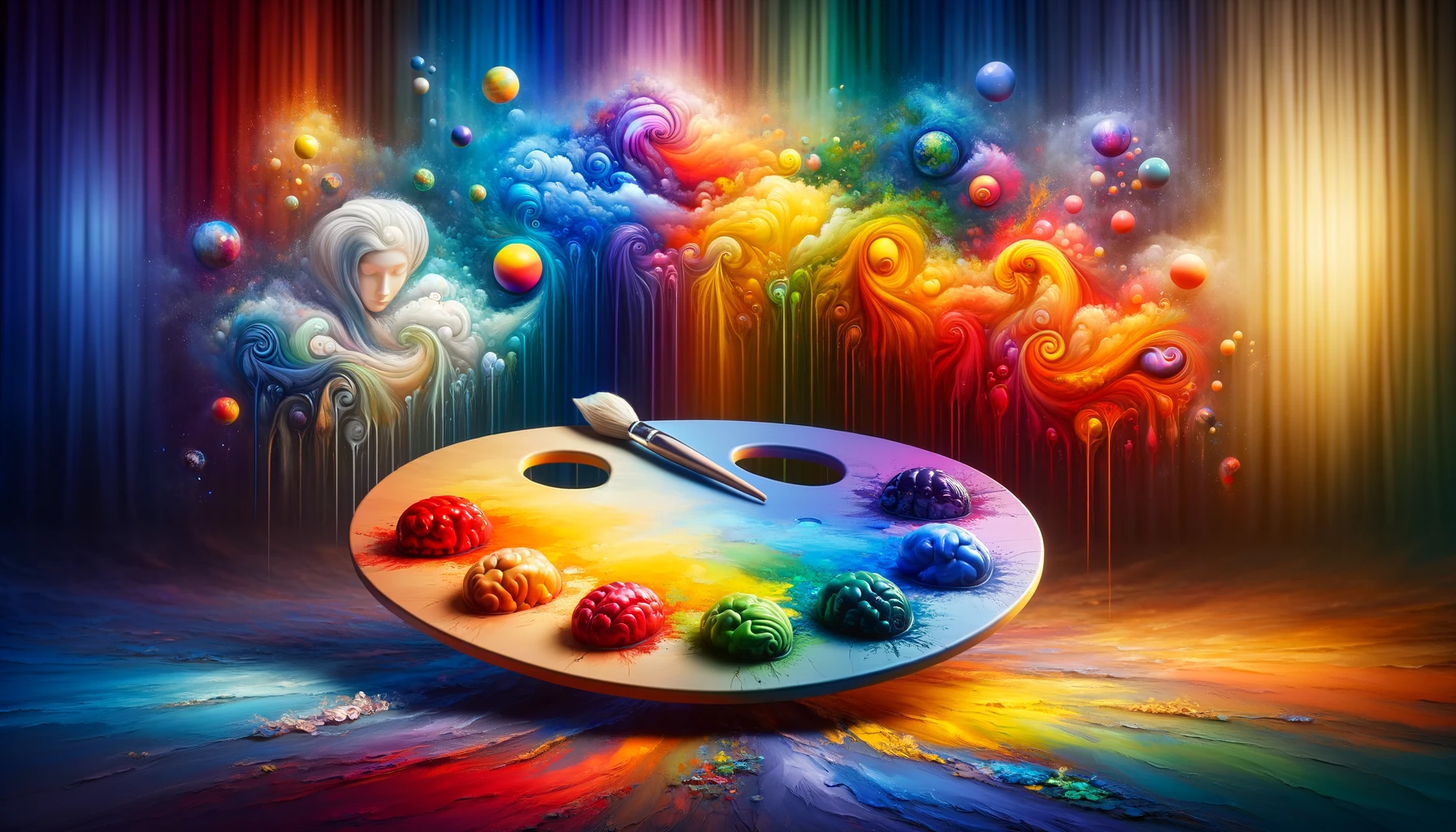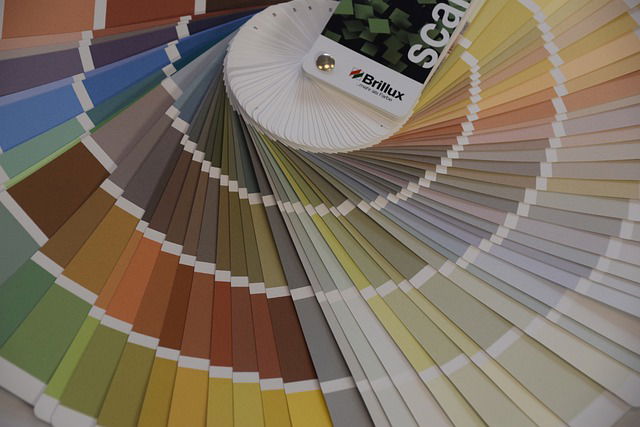Exploring the Psychology of Color: A Palette of Emotions

Key Features:
- Emotional Associations of Colors:
- The article details how different colors can evoke specific emotional responses. For example, blue is associated with serenity and stability, red with energy and urgency, and green with nature and tranquility. These associations are crucial for understanding how color choices in environments like homes, offices, or branding can influence feelings and behavior.
- Practical Applications in Various Fields:
- Color psychology is applied in several areas, including interior design, marketing, and personal style. Colors are selected to create desired effects, such as calming atmospheres in homes or engaging and energetic environments in advertising. The article emphasizes how these choices can affect mood, productivity, and even consumer behavior.
- Guidance for Color Selection:
- The article provides tips on choosing colors for specific spaces and purposes, considering the psychological effects. It suggests using calming colors like blues and greens in bedrooms to promote relaxation and vibrant colors like yellows and oranges in spaces intended for activity and creativity.
Psychology of Color
Color isn’t just about aesthetics—it’s a powerful tool that influences our emotions, behaviors, and perceptions. Whether you’re designing a home, office, or commercial space, understanding the psychology of color helps create an environment that aligns with the mood or experience you want to evoke. Let’s dive into how different colors impact emotions and how you can use this knowledge to make thoughtful color choices.
How Does Color Influence Our Emotions?
Colors can elicit specific emotional responses, often without us realizing it. For example, warm tones like red and orange tend to evoke energy and excitement, while cooler hues like blue and green bring calmness and relaxation. These psychological effects are often rooted in both biology and cultural associations, making color a key element in design.
| Color | Associated Emotion/Effect | Common Uses |
|---|---|---|
| Red | Passion, energy, urgency | Restaurants, gyms, sale signs |
| Blue | Calm, trust, professionalism | Offices, healthcare settings |
| Green | Renewal, nature, growth | Spas, environmental brands |
| Yellow | Optimism, warmth, creativity | Schools, cafes, retail spaces |
| Purple | Luxury, creativity, spirituality | Salons, luxury hotels |
What Are Warm Colors and How Do They Affect Mood?
Warm colors, such as red, orange, and yellow, tend to grab attention and stimulate the senses. They create feelings of warmth, excitement, and urgency—perfect for areas where you want to inspire energy and enthusiasm.
- Red is often associated with passion and intensity. It works well in spaces like dining rooms or restaurants where you want to encourage interaction and appetite. However, too much red can feel overwhelming.
- Orange conveys enthusiasm and vitality, making it ideal for workout spaces or creative environments.
- Yellow brings joy and optimism. It’s a great choice for kitchens or classrooms, though it should be used carefully, as too much yellow can evoke frustration or anxiety.
How Do Cool Colors Create Calm and Relaxation?
Cool colors, such as blue, green, and purple, have a calming effect and are commonly used in spaces where tranquility is essential.
- Blue fosters a sense of peace and trust, making it perfect for bedrooms, bathrooms, or office spaces. Studies even suggest that blue can lower blood pressure and slow the heart rate.
- Green is the color of nature and symbolizes renewal and harmony. It works well in spaces where you want to bring the outdoors in, such as sunrooms or yoga studios.
- Purple strikes a balance between creativity and luxury. It’s often used in salons or high-end retail spaces to evoke a sense of sophistication.
What Is the Role of Neutral Colors in Design?
Neutrals like white, gray, and beige act as the foundation of a palette. While they may not evoke strong emotions on their own, they provide balance and flexibility.
- White represents cleanliness and simplicity, making it a popular choice for minimalist interiors. It can also create a sense of space, making rooms appear larger.
- Gray offers versatility, bringing sophistication without overwhelming the space. However, darker grays can feel cold if not paired with warm accents.
- Beige brings warmth and works well in areas where you want a neutral but cozy vibe, such as living rooms or bedrooms.
Can Color Psychology Be Used in Business Branding?
Absolutely! Brands carefully select colors based on the emotions they want to convey to their customers. This is why many fast-food chains use red to stimulate hunger, while tech companies lean toward blue to evoke trust and dependability.When choosing colors for your brand or workspace, consider the emotional impact they may have on your target audience. The right palette can enhance brand perception and even influence customer behavior.
How to Apply Color Psychology in Home Design?
Color psychology isn’t limited to marketing—it’s also a powerful tool in interior design. Here are some tips for applying it in your home:
- Living rooms: Use warm colors like orange or earthy tones to create an inviting atmosphere.
- Bedrooms: Opt for cooler tones like soft blues or greens for a restful vibe.
- Home offices: Use blue or green to boost concentration and productivity.
- Bathrooms: White or pale blue creates a spa-like environment.
Pro Tip:
If you’re not ready to commit to bold colors on walls, consider adding color through accessories, such as pillows, rugs, or artwork. This allows you to experiment without feeling locked into a particular palette.
How Do Cultural Differences Affect Color Perception?
While the psychological effects of color are often universal, cultural associations can vary. For instance, in Western cultures, white symbolizes purity, while in some Eastern cultures, it’s associated with mourning. Understanding these differences is essential, especially for global brands or multicultural design projects.
| Color | Western Meaning | Eastern Meaning |
|---|---|---|
| White | Purity, cleanliness | Mourning, spirituality |
| Red | Passion, love | Good luck, prosperity |
| Black | Elegance, mystery | Mourning, power |
What Are the Key Takeaways for Using Color Effectively?
- Consider the room’s purpose: Choose colors based on how you want people to feel in the space.
- Balance bold and neutral tones: Too much of any one color can overwhelm the senses.
- Understand cultural associations: Pay attention to how colors may be perceived differently in various contexts.
- Use color strategically in branding: Think about the emotions you want your customers to feel when interacting with your brand or space.
In Our Experience
"At Lightmen Painting, we’ve seen firsthand how the right color can transform a space. One client wanted a red accent wall in their dining room to encourage lively conversation—and it worked like a charm! On the flip side, a soft blue nursery helped new parents create a calm, restful environment for their newborn. When you understand the psychology of color, the possibilities are endless."Color is more than just decoration—it’s a tool for communication. Whether you’re designing your home or planning a marketing campaign, understanding how color affects emotions will help you create spaces that feel just right. So next time you’re picking out a paint swatch, think beyond aesthetics—think about how the color will make you and others feel.
- Red: Red is associated with energy, passion, and excitement. It can increase heart rate and create a sense of urgency, making it a powerful color for stimulating action and enthusiasm.
- Blue: Blue is calming and often associated with serenity, trust, and reliability. Lighter blues can be soothing, while darker blues can convey professionalism and stability.
- Green: Green is linked to nature, growth, and balance. It promotes a sense of calm and relaxation, making it ideal for creating a harmonious environment.
- Yellow: Yellow is a vibrant and cheerful color that signifies happiness, positivity, and optimism. It can boost creativity and evoke a sense of warmth.
- Orange: Orange is energetic and playful. It stimulates creativity and enthusiasm while also conveying a sense of warmth and friendliness.
- Purple: Purple is often associated with luxury, creativity, and spirituality. It can evoke a sense of mystery and sophistication.
- Pink: Pink is soft and soothing, symbolizing love, compassion, and nurturing. Lighter shades can create a sense of tranquility.
- Brown: Brown is earthy and grounding. It conveys stability and reliability and can create a warm and cozy atmosphere.
- Gray: Gray is neutral and balanced, often representing practicality and professionalism. It can create a sense of formality.
- Black: Black is sophisticated and powerful, symbolizing strength and authority. It can create a sense of elegance and mystery.
- White: White is pure and clean, representing simplicity and clarity. It can create a sense of spaciousness and neutrality.
- Turquoise: Turquoise combines the calming aspects of blue with the invigorating qualities of green. It promotes relaxation and creativity.
- Gold: Gold is associated with luxury, wealth, and success. It can evoke feelings of opulence and prestige.
- Silver: Silver is futuristic and modern, symbolizing innovation and technology. It can create a sense of sleekness and efficiency.
- Lavender: Lavender is calming and peaceful, often associated with relaxation and tranquility. It can reduce stress and anxiety.
- Beige: Beige is neutral and versatile, conveying simplicity and comfort. It can create a sense of warmth and coziness.
- Magenta: Magenta is vibrant and intense, symbolizing creativity and individuality. It can evoke feelings of excitement and uniqueness.
- Teal: Teal combines the calming aspects of blue with the invigorating qualities of green. It promotes creativity and a sense of balance.
- Olive Green: Olive green is earthy and represents growth and harmony. It can create a sense of stability and connection to nature.
- Coral: Coral is energetic and vibrant, symbolizing enthusiasm and playfulness. It can boost mood and creativity.
- Slate Blue: Slate blue is calming and sophisticated, conveying a sense of reliability and professionalism.
- Burgundy: Burgundy is rich and elegant, often associated with luxury and sophistication.
- Indigo: Indigo is deep and contemplative, symbolizing introspection and wisdom.
- Taupe: Taupe is neutral and versatile, creating a sense of balance and sophistication.
- Rose Gold: Rose gold is warm and trendy, symbolizing romance and modernity. It can create a sense of luxury and style.
- Aqua: Aqua is refreshing and invigorating, representing clarity and purity. It can create a sense of tranquility and freshness.
- Bronze: Bronze is warm and rustic, often associated with durability and tradition. It can evoke feelings of nostalgia and strength.
- Navy Blue: Navy blue is deep and classic, symbolizing professionalism and authority. It can create a sense of stability and reliability.
- Pearl: Pearl is elegant and timeless, often associated with sophistication and beauty. It can evoke a sense of luxury and refinement.
- Salmon: Salmon is warm and inviting, representing enthusiasm and friendliness. It can create a sense of approachability.
- Cyan: Cyan is vibrant and energetic, symbolizing creativity and innovation. It can boost mood and stimulate the imagination.
- Plum: Plum is rich and luxurious, often associated with opulence and extravagance. It can evoke a sense of indulgence.
- Sage Green: Sage green is calming and earthy, representing balance and growth. It can create a sense of harmony and stability.
- Ivory: Ivory is soft and elegant, symbolizing purity and simplicity. It can create a sense of understated luxury.
- Lime Green: Lime green is vibrant and energetic, often associated with youthfulness and playfulness. It can boost creativity and enthusiasm.
- Rust: Rust is warm and rustic, representing earthiness and durability. It can evoke feelings of comfort and nostalgia.
- Periwinkle: Periwinkle is soft and soothing, symbolizing serenity and tranquility. It can reduce stress and promote relaxation.
- Burgundy: Burgundy is rich and deep, often associated with sophistication and luxury. It can create a sense of opulence.
- Tangerine: Tangerine is bold and energetic, representing enthusiasm and vitality. It can boost mood and creativity.
- Charcoal Gray: Charcoal gray is modern and sleek, symbolizing sophistication and efficiency. It can create a sense of professionalism.
- Sky Blue: Sky blue is light and airy, often associated with peace and serenity. It can create a sense of calm and relaxation.
- Mint Green: Mint green is fresh and invigorating, symbolizing renewal and growth. It can promote a sense of rejuvenation.
- Chocolate Brown: Chocolate brown is warm and comforting, representing stability and reliability. It can evoke feelings of security.
- Lilac: Lilac is soft and calming, often associated with grace and elegance. It can create a sense of tranquility.
- Crimson: Crimson is bold and passionate, symbolizing intensity and excitement. It can evoke strong emotions and energy.
- Copper: Copper is warm and rustic, representing tradition and durability. It can create a sense of nostalgia and strength.
- Teal Blue: Teal blue is calming and balanced, symbolizing clarity and harmony. It can promote a sense of stability.
- Olive Brown: Olive brown is earthy and natural, often associated with growth and authenticity. It can create a sense of connection to the environment.
- Mauve: Mauve is soft and romantic, representing gentleness and sensitivity. It can evoke a sense of tenderness.
- Steel Gray: Steel gray is neutral and modern, symbolizing professionalism and efficiency. It can create a sense of formality and seriousness.
Empowering Environments with Color Psychology
These colors are like the notes on a painter's palette, each capable of creating a unique emotional landscape. The choice of color in interior design, branding, or even personal style can significantly impact how we feel and interact with our surroundings. Whether consciously or subconsciously, colors influence our emotions and behaviors every day.
Understanding the psychology of color empowers us to create intentional and meaningful environments that align with our goals and aspirations.
Whether we seek the calming influence of aqua, the creative spark of cyan, or the opulent luxury of plum, there's a color waiting to evoke the emotions we desire.
So, the next time you're faced with a color choice, take a moment to consider the emotions it might awaken. Whether you're designing a room, choosing a brand identity, or simply selecting your outfit for the day, let your palette guide you in creating the perfect ambiance to reflect your mood, aspirations, and intentions. After all, life is a canvas, and the colors we choose help paint our unique stories.
Do You Have Questions? Give Us A Call 503-389-5758
-
People Also Ask:
How does color psychology impact interior design?
Color psychology plays a crucial role in interior design by influencing mood, creating perceptions of space, and enhancing the functionality of rooms. For instance, using calming blues in a bedroom can promote relaxation, while incorporating vibrant yellows in a home office can boost creativity and energy. Understanding color psychology allows designers to create spaces that not only look beautiful but also evoke desired emotional responses and meet the psychological needs of the occupants.
Can the color of a room affect productivity and mood?
Yes, the color of a room can significantly affect productivity and mood. Colors like green and blue are known to enhance concentration and reduce stress, making them ideal for workspaces. Conversely, warm colors such as red and orange can stimulate conversation and excitement, suited for living and dining areas. Selecting the right colors for specific room functions can create environments that support the activities and emotional well-being of those using the space.
What are the best colors to use for a calming and peaceful environment?
For a calming and peaceful environment, colors that mimic nature and evoke a sense of serenity are best. Shades of blue, which are often associated with the sky and water, promote tranquility and relaxation. Soft greens, reminiscent of foliage and grass, offer a restorative and refreshing ambiance. Additionally, neutrals like beige, taupe, and soft grays can create a subtle backdrop that induces calmness and stability, making them ideal for creating a peaceful environment.
-
Subscribe to Our Blog & Elevate Your DIY Game! Never miss a beat! Join the Lightmen Painting community and get the latest insights on painting, DIY projects, and expert tips delivered straight to your inbox.
Have something specific in mind? We’d love to hear your ideas! Let us know what topics or projects you’re curious about—your input could shape our next post.
Subscribe now and let’s transform your spaces together!
If your in the Portland, Or. area and need advice or a free no obligation estimate call us at 503-389-5758 or email scheduling@lightmenpainting.com
Shout Out
Celebrating Tom McCall Waterfront Park: A Vibrant Urban Retreat
From the team at Lightmen Painting, we extend our warmest regards to Tom McCall Waterfront Park, a centerpiece of Portland's public spaces and a favorite among residents and visitors alike. Our dedication to enhancing environments through quality painting services mirrors the park's role in providing a scenic and vibrant urban retreat along the Willamette River. Whether hosting festivals, jogging paths, or tranquil spots for picnics, Tom McCall Waterfront Park exemplifies Portland's commitment to community spaces and outdoor activities, much like our commitment to beautifying and protecting spaces through our professional services.
Thanks for stopping by Lightmen Daily! Stay tuned for more practical tips and expert advice on making your painting projects flawless, from wall to floor!
Lightmen Painting Serving: Portland, Tigard, Lake Oswego, Tualatin, West Linn, Milwaukie, Sherwood, Happy Valley, Oregon City, Beaverton, Hillsboro, Gresham


